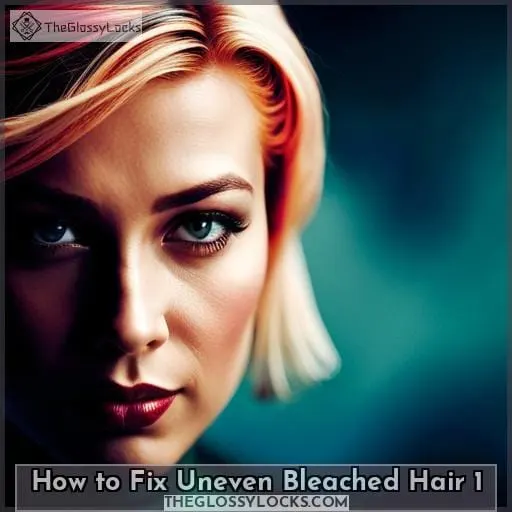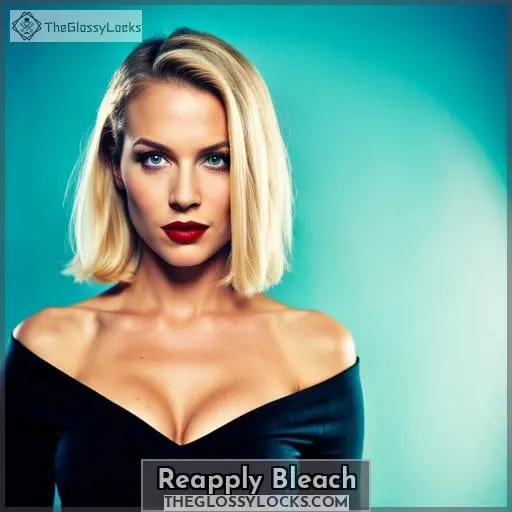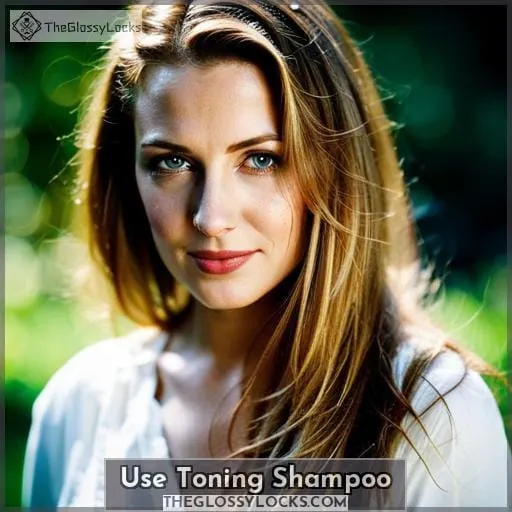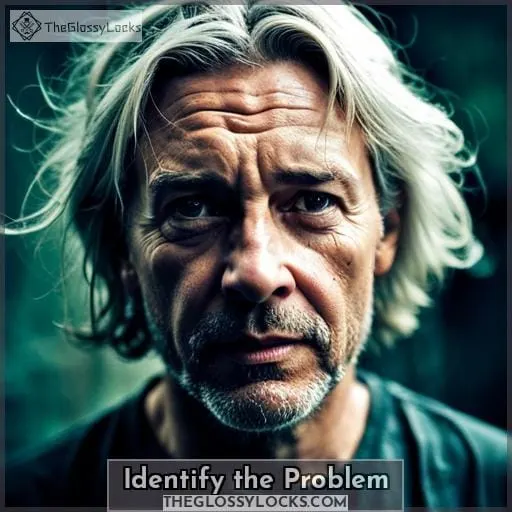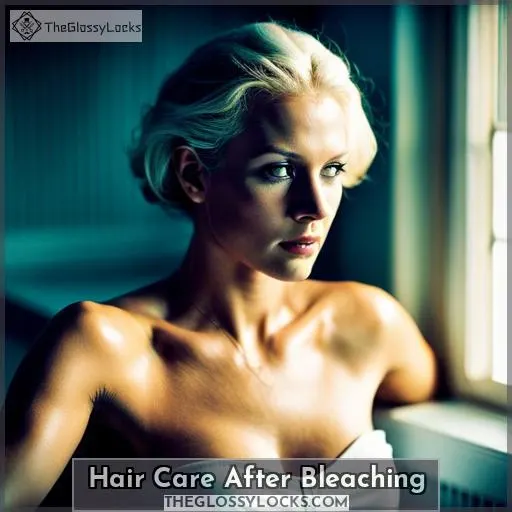This site is supported by our readers. We may earn a commission, at no cost to you, if you purchase through links.
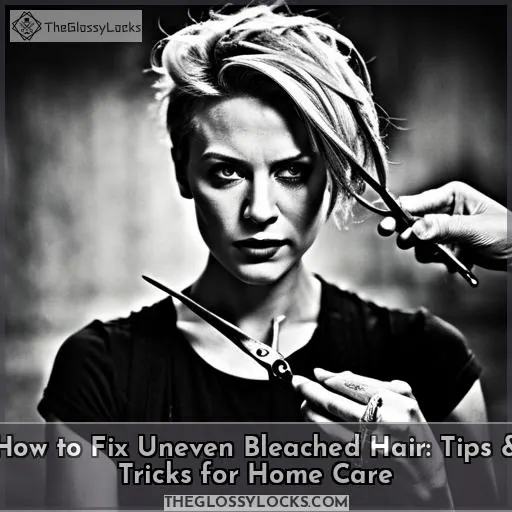 Surprisingly, one of the most common beauty mistakes made by DIYers is unevenly bleached hair. If you find yourself in this situation after attempting to lighten your locks at home, don’t worry – there are ways to fix it! Knowing how to fix uneven bleached hair can be a lifesaver for anyone who wants their locks back on track as quickly and safely as possible.
Surprisingly, one of the most common beauty mistakes made by DIYers is unevenly bleached hair. If you find yourself in this situation after attempting to lighten your locks at home, don’t worry – there are ways to fix it! Knowing how to fix uneven bleached hair can be a lifesaver for anyone who wants their locks back on track as quickly and safely as possible.
Table Of Contents
Key Takeaways
- Dye hair with a darker shade to balance out the bleached parts.
- Use deep conditioning treatments before and after coloring to prevent further damage.
- Apply protective shields before coloring to protect against heat damage.
- Use hydrating masks once a week to revive brittle strands caused by bleach usage.
Dye With a Darker Shade
To restore your hair’s natural beauty, consider dyeing it with a darker shade to balance out the bleached parts. To prevent any further damage and unevenness when fixing your bleached hair, always use deep conditioning treatments before and after coloring.
This will help protect against breakage due to the harsh chemicals used in bleach products.
Additionally, it’s important to match colors correctly in order to achieve even results. Make sure you choose shades that are close enough together but still contrast each other effectively. Prior to coloring, apply protective shields to lock in moisture and protect against heat damage from styling tools or environmental factors like UV rays.
Don’t forget about scalp care! Apply a hydrating mask once a week on dry hair to revive brittle strands caused by bleach usage over time and leave them looking healthier overall. When applying color, start from the roots and work your way down to the tips of your hair, using small sections at first.
Make sure all strands are covered properly to avoid missing any spots during the application process, which can result in more even results.
For added protection and nourishment, use quality oil-based products such as Moroccanoil Treatment Oil or Hair Serums/Protectors. These can help reduce future discoloration issues related back to those initial uneven tones created by the original home-bleaching attempt.
Reapply Bleach
If you’re looking for a way to quickly restore your hair’s blonde color, give bleaching another try – but this time be sure to do it right.
Ensure you mix the correct amount of Bleaching Powder and Colour Bonds according to instructions.
Analyze your base color before applying bleach so that you can apply an appropriate quantity accordingly; too much or too little can lead to unevenness in coloring.
Make sure all strands of hair are covered properly with the bleach mixture during application – start from tips and work towards roots in small sections at first.
Be mindful not to make any wrong applications as this could cause more damage than good – wait 40 minutes after each layer has been applied before washing off thoroughly with conditioner afterwards (don’t forget about scalp care).
It is also essential that proper precautions are taken when using chemical treatments like bleaches on one’s locks; always use deep conditioning treatments prior and post-coloring session, choose quality products such as Moroccanoil Treatment Oil or Hair Serums/Protectors for added protection against breakage due to environmental factors like UV rays, etc.
Nourish them weekly with hydrating masks specifically designed for chemically treated hairs, etc.
Additionally, if missed spots still appear after reapplication, then the spot bleaching method may have lesser amounts of chemicals which needs less waiting time compared to the normal full head dyeing technique – however, caution should still be exercised while doing so! Following these techniques correctly would help restore natural beauty & color back into those lovely locks without causing further damage along the way.
Use Toning Shampoo
For a more subtle solution to correcting uneven shades, toning shampoo can be used in place of harsher bleaching techniques. This method offers an instant fix for hue correction without requiring the amount of bleach needed for full-head application or scalp care that’s required when reapplying bleach.
Toning shampoos are specially designed with color pigments that target any unwanted tones and help restore hair health while giving it an even, natural look. They come in different colors, such as blue or red, to counteract orange hues and yellowish tint, respectively.
Additionally, using a nourishing shampoo once a week can further protect your locks from damage caused by chemical treatments.
Ultimately, choosing the right product combined with proper application methods will ensure you achieve desired results quickly.
Identify the Problem
It’s important to identify the root of your uneven bleached hair before attempting to correct it; otherwise, you’ll simply be spinning your wheels like a car stuck in mud. Unevenly bleached hair can be caused by improper application technique or insufficient bleach quantity.
If left untreated, the orange shade might become more visible and difficult to fix later on. To combat this issue, start by assessing what could have gone wrong with your last bleaching attempt and ensure that all factors are taken into account when reapplying bleach.
When fixing uneven shades of color on already lightened strands, using toning shampoo is an easy way out as opposed to harsher methods such as full head rebleaching—which may cause damage if done improperly.
Toning shampoos come in different colors, so pick one that contrasts well with whatever hue you’re trying to eliminate (e.
Additionally, use a hydrating mask once a week along with Moroccanoil Treatment Oil prior to blow drying for maximum protection against heat tools. All these steps should give desired results quickly without damaging fragile strands further! Finally, don’t forget about proper aftercare: choose the right products designed specifically for chemically treated tresses and use oils, serums, and heat protectors as necessary.
Hair Care After Bleaching
To maintain beautiful blonde hair, be sure to use toning shampoo two to three times a week and replenish with nourishing masks and oils for maximum protection.
Hair care after bleaching is essential in order to achieve the desired results. To prevent UV damage, using a hair sunscreen can help protect your locks from the sun’s harsh rays. It’s also important to choose products specifically designed for chemically treated tresses, such as shampoos and conditioners that are gentle on your scalp while providing hydration back into your hair strands.
For spot bleaching, it may be necessary to use less quantity of bleach than you would usually need when attempting an all-over lightening process. This will ensure evenness without risking damaging previously processed areas! Additionally, celebrity hairstylists often advise mixing small amounts of different colors together if you desire highlights or lowlights.
Finally, opting for conditioning masks once a week, along with heat protectors before styling, can help keep blonde locks looking their best and make them stronger over time.
Frequently Asked Questions (FAQs)
How can I make sure I don’t over-bleach my hair?
To ensure you don’t over-bleach your hair, utilize a nourishing routine and choose the appropriate bleach product. Divide your hair into sections and gradually apply the bleach from the roots to the tips.
Allow it to sit for 40 minutes before rinsing it off. To prevent uneven color, make sure to give enough time between bleaching sessions.
What type of hair products should I use when bleaching my hair?
When bleaching your hair, use products that will protect and nourish it. Look for shampoos and conditioners specifically made for chemically treated hair to help maintain healthy locks. Use a hydrating mask once a week, as well as heat protectors, serums, oils, or Moroccanoil Treatment oil when styling.
How much bleach should I use for spot bleaching?
When spot bleaching, use a small amount of bleach and apply it in sections to ensure even coverage. Work from the tips towards the roots for best results, then wait 40 minutes before washing out.
How do I know if I need to tone my hair?
You may need to tone your hair if it appears too orange, red, or brassy. Look at the overall color and decide if you want a more even shade of blonde. If so, toning shampoo can be used two to three times a week for the best results.
How can I minimize damage to my hair while bleaching?
To minimize damage to your hair while bleaching, use a nourishing and hydrating routine, choose the right bleach product, apply it properly in small sections from tips to roots, and cover all strands.
Conclusion
For those with unevenly bleached hair, it can feel like the beauty of their locks has been lost. As the saying goes, ‘you have to risk it to get the biscuit’. However, with the right precautions and hair care routine, you can fix the uneven bleaching of your hair.
First, try dyeing with a darker shade to even out the color. If that doesn’t help, consider reapplying bleach using the correct methods.
Additionally, make sure to properly clean your scalp and dry your hair before applying bleach.
With a little effort, you can fix the uneven bleached hair and restore your locks to their former glory.

